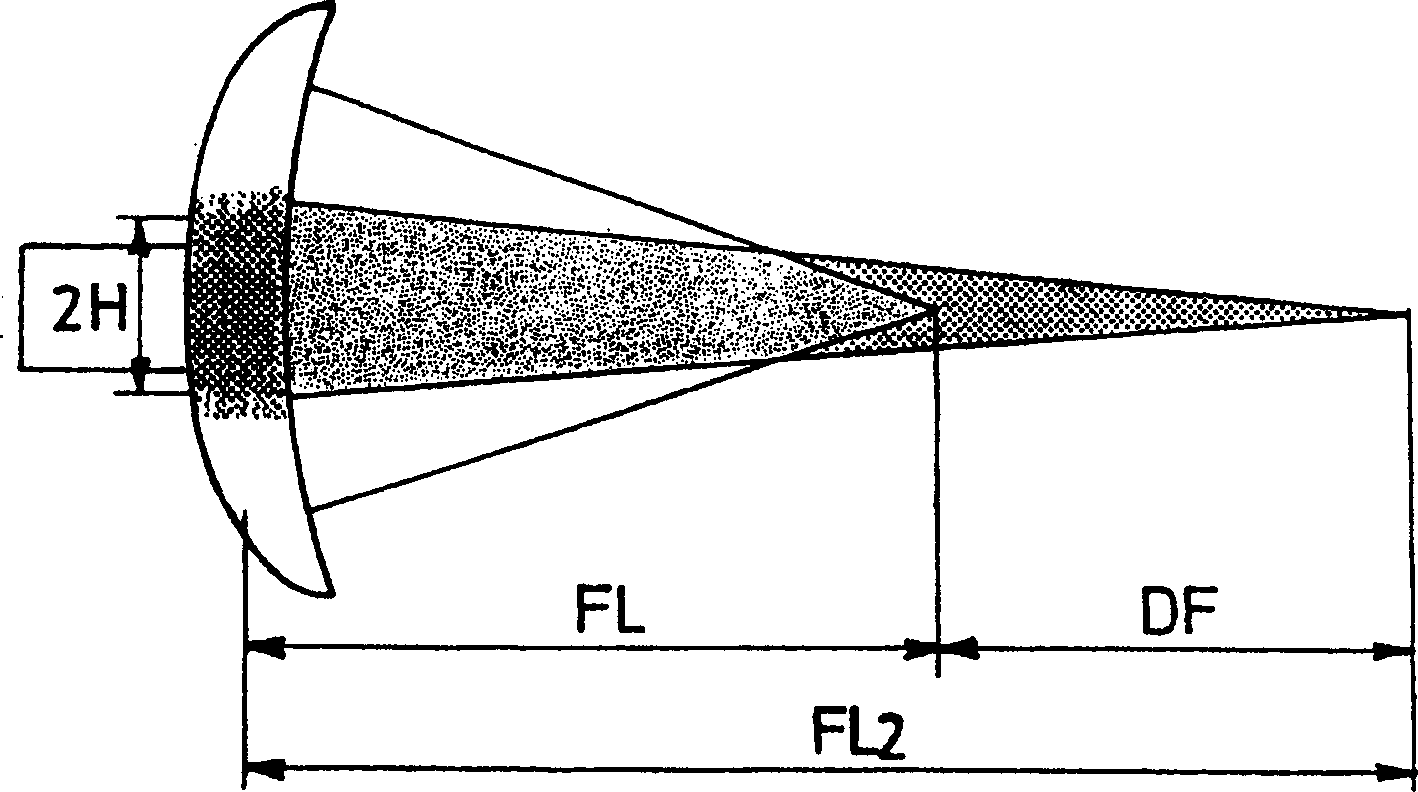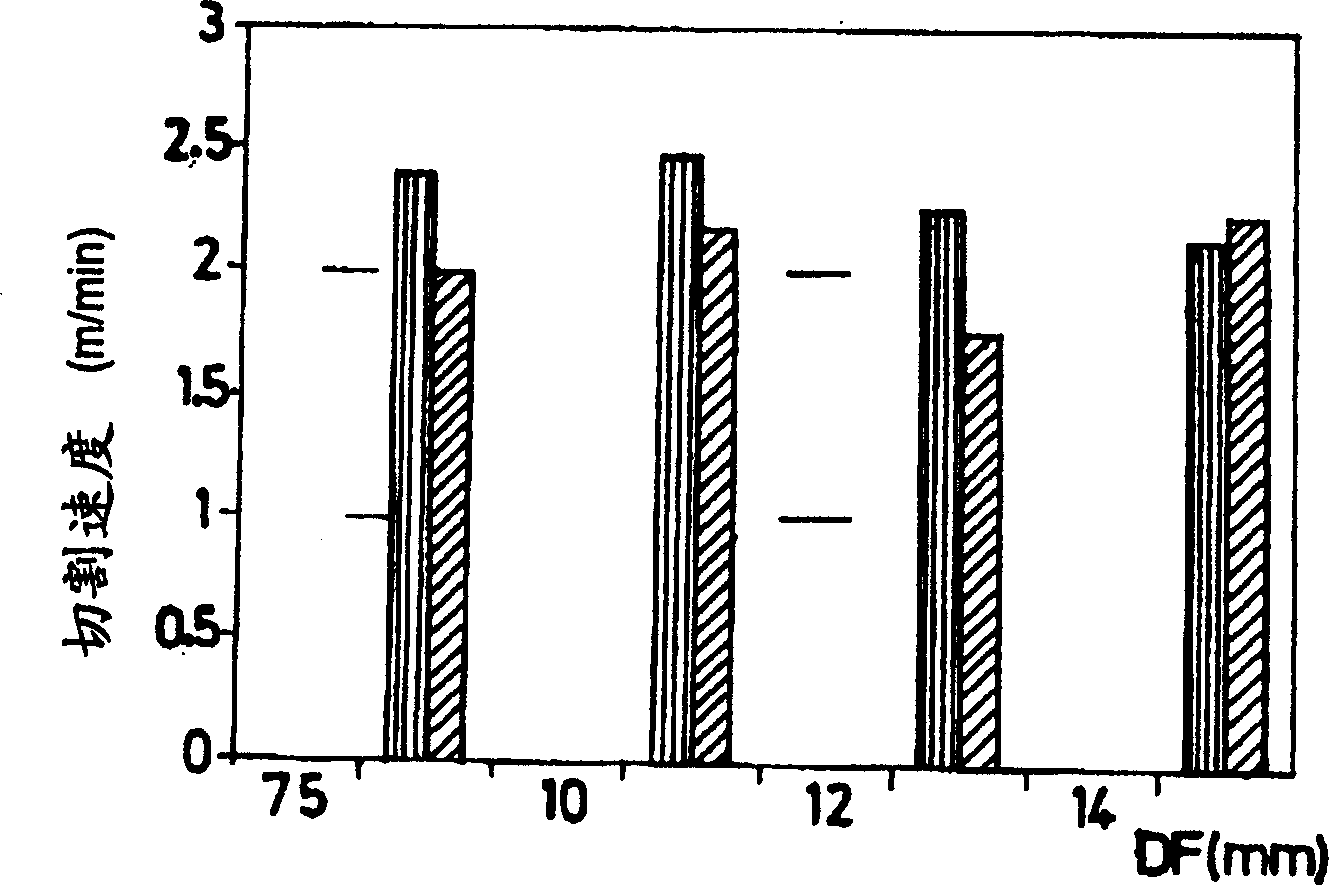Laser cutting of thick metal parts with a dual-focus lens
A technology for metal workpieces and lenses, applied in metal processing equipment, lenses, laser welding equipment, etc.
- Summary
- Abstract
- Description
- Claims
- Application Information
AI Technical Summary
Problems solved by technology
Method used
Image
Examples
Embodiment Construction
[0033] When it came to the solution of the above-mentioned problems, the inventors of the present invention noticed that the laser cutting method using a bifocal lens depends on the parameters of the lens used, namely its focal length FL, (diameter) 2H and (distance) DF, such as figure 1 shown in .
[0034] The 2H value of a lens corresponds to that diameter of the central region of the lens whose radius of curvature differs from that of the peripheral portion of the lens. The part of the incident beam lying outside the diameter 2H is focused on a first focal point PF1 at the main focal length FL. The part of the incident laser beam lying within the diameter 2H is focused on a second focal point PF2 at the main focal length FL2. The size of the diameter 2H determines the amount of energy concentrated at the second focal point PF2.
[0035] The distance DF corresponds accordingly to the difference between the focal lengths FL and FL2, as figure 1 shown.
[0036] example
...
PUM
| Property | Measurement | Unit |
|---|---|---|
| Thickness | aaaaa | aaaaa |
| Diameter | aaaaa | aaaaa |
| Power | aaaaa | aaaaa |
Abstract
Description
Claims
Application Information
 Login to View More
Login to View More - R&D
- Intellectual Property
- Life Sciences
- Materials
- Tech Scout
- Unparalleled Data Quality
- Higher Quality Content
- 60% Fewer Hallucinations
Browse by: Latest US Patents, China's latest patents, Technical Efficacy Thesaurus, Application Domain, Technology Topic, Popular Technical Reports.
© 2025 PatSnap. All rights reserved.Legal|Privacy policy|Modern Slavery Act Transparency Statement|Sitemap|About US| Contact US: help@patsnap.com



